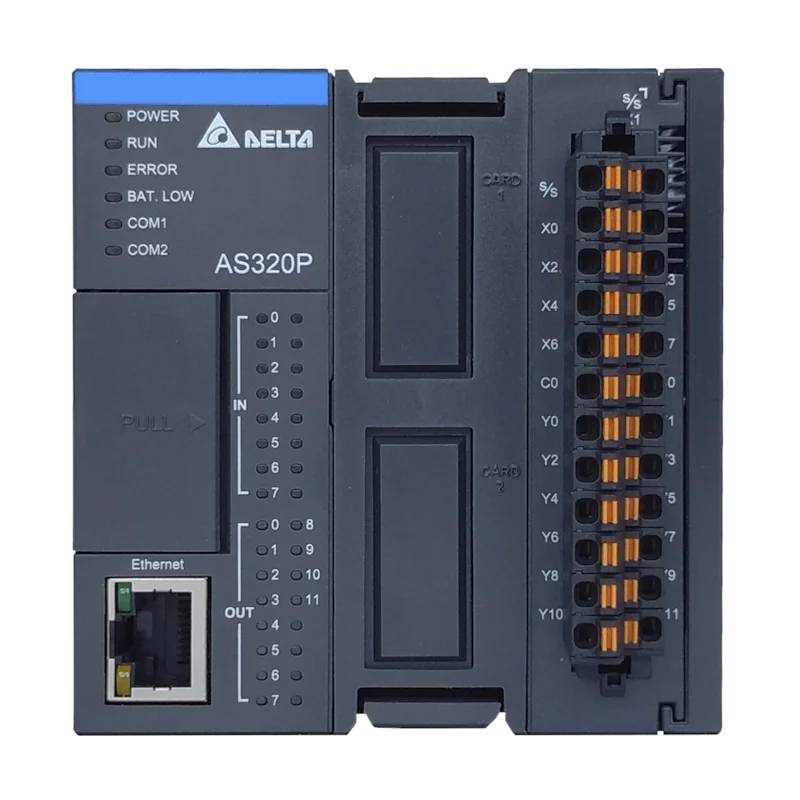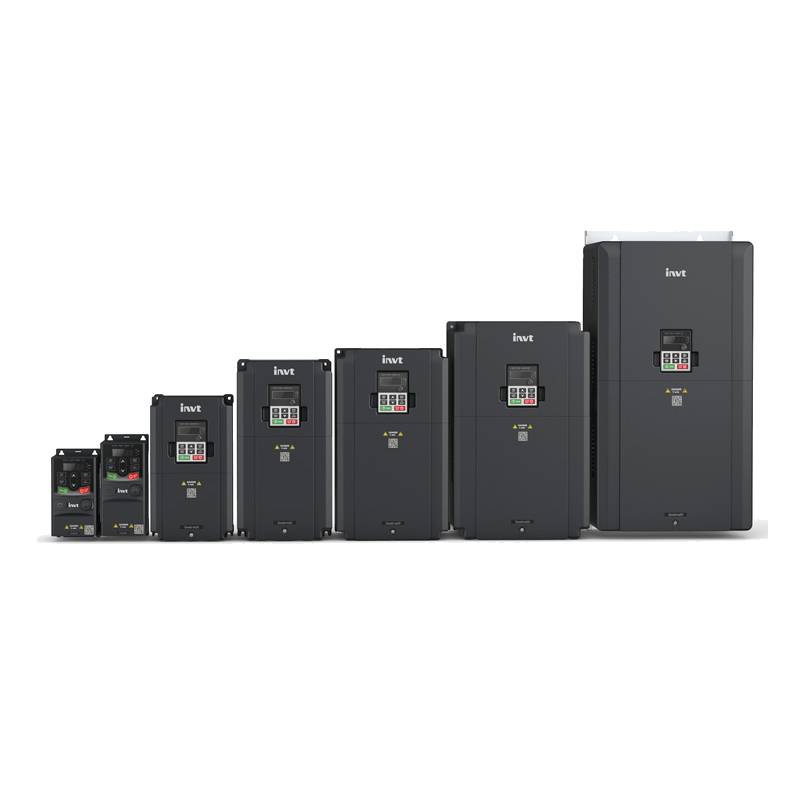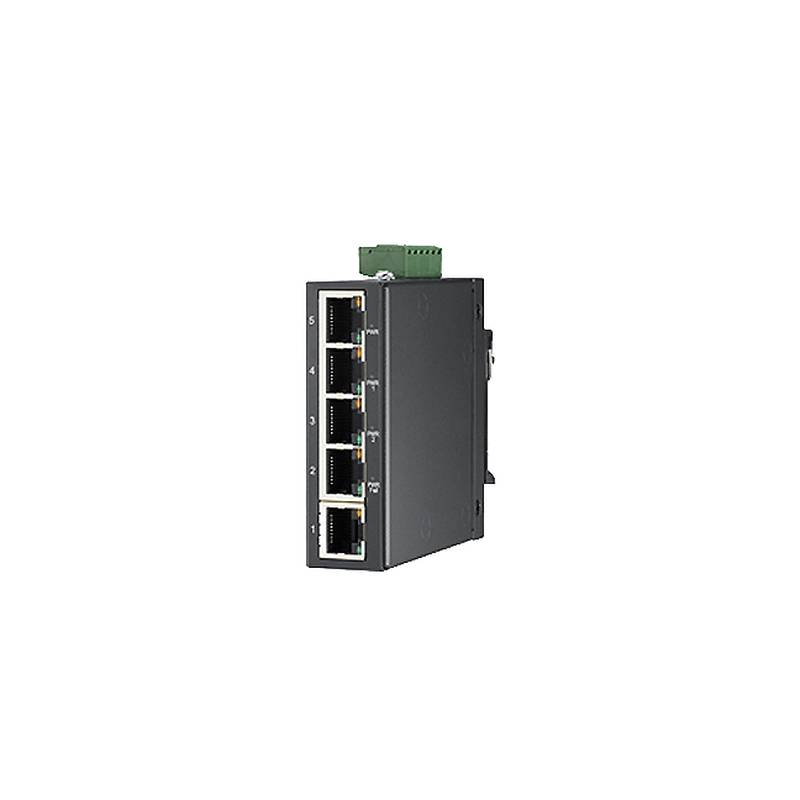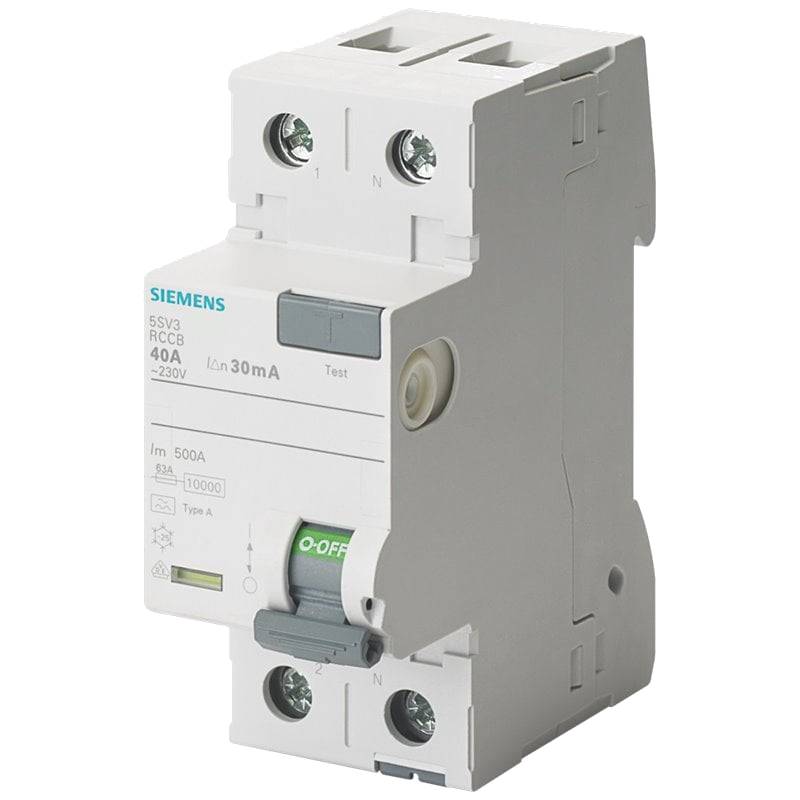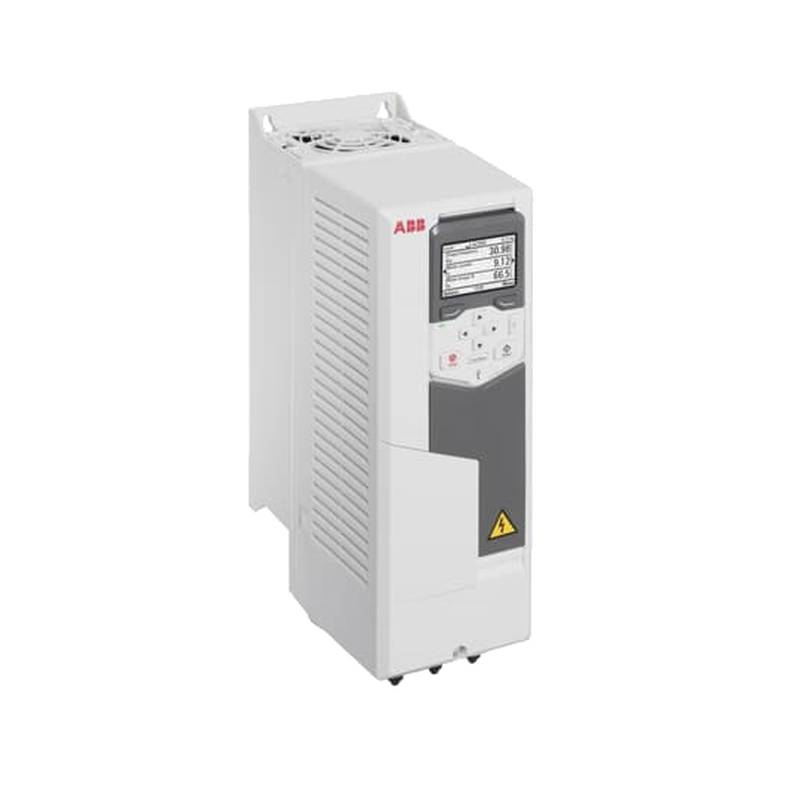
The Delta ECM-E3M-CM0807SSE is a state-of-the-art Medium Inertia Brake Automation Servo Drive designed to deliver precise motion control and robust performance in demanding industrial applications. This drive excels by offering rapid acceleration and deceleration capabilities, crucial for high-cycle operations. Its advanced braking system ensures exceptional holding torque and safety, even under load variations. Key technical parameters include a nominal voltage of 200-240 VAC, a continuous output current of 7A, and a peak output current of 14A, supporting motors up to 0.75 kW. The drive boasts an impressive IP20 protection rating and operates efficiently within a temperature range of 0°C to 55°C, making it suitable for a wide array of environments.
Product Specifications
| Parameter | Specification |
| :------------------- | :-------------------- |
| Model | ECM-E3M-CM0807SSE |
| Nominal Voltage | 200-240 VAC |
| Continuous Current | 7 A |
| Peak Current | 14 A |
| Motor Power | 0.75 kW |
| Inertia | Medium |
| Protection Rating | IP20 |
| Operating Temp. | 0°C to 55°C |
| Braking Resistor Duty | Continuous |
| Encoder Interface | Incremental, Absolute |
Core Features & Market Positioning
The Delta ECM-E3M-CM0807SSE distinguishes itself through its integrated medium inertia braking system, offering superior stopping power and precise positioning compared to drives without such robust braking. This direct integration simplifies system design and reduces the need for external braking components, lowering overall costs and potential failure points. Its advanced motion control algorithms ensure smooth operation and high accuracy, positioning it as a premium solution for applications requiring dynamic performance and reliability. Delta's reputation for quality and innovation further solidifies its market standing as a trusted provider of automation solutions.
Key Application Scenarios
This servo drive is ideally suited for pick-and-place machines, automated guided vehicles (AGVs), and packaging equipment where rapid, controlled movements are paramount. Its medium inertia capability, combined with precise braking, makes it an excellent choice for vertical axis applications such as hoists and cranes, ensuring loads are held securely and moved smoothly. Furthermore, the ECM-E3M-CM0807SSE is highly effective in textile machinery and robotics, where dynamic response and position accuracy are critical for product quality and throughput.
Practical System Integration Guidance
Integrating the Delta ECM-E3M-CM0807SSE servo drive involves connecting it to a compatible Delta servo motor and ensuring proper wiring for power, control signals, and feedback. The drive supports various encoder types, including incremental and absolute encoders, allowing for flexible motor selection. For optimal performance, it's recommended to utilize Delta's dedicated servo tuning software, which facilitates parameter configuration, motor auto-tuning, and system diagnostics. Proper grounding and shielding of motor and encoder cables are essential to prevent electrical noise interference, ensuring reliable operation.
Operation and Risk Mitigation
Safe operation of the Delta ECM-E3M-CM0807SSE servo drive requires adherence to the manufacturer's safety guidelines, particularly concerning electrical connections and emergency stop functionalities. The integrated brake is a critical safety feature; ensure it is correctly configured and tested. Common troubleshooting may involve checking motor connections, encoder feedback signals, and power supply stability. Fault codes displayed on the drive's interface provide diagnostic information; refer to the user manual for specific code meanings and corrective actions, such as overcurrent (e.g., fault code F01) or encoder errors (e.g., fault code F05).
Scalability & Long-Term Value
The ECM-E3M-CM0807SSE servo drive is designed for compatibility with Delta's broader automation ecosystem, allowing for seamless integration with PLCs, HMIs, and other motion control components. This compatibility facilitates the creation of scalable automation systems that can be easily expanded or upgraded. Its robust design and Delta's commitment to product development ensure long-term value and support, making it a strategic investment for businesses looking to enhance their manufacturing capabilities and embrace Industry 4.0 initiatives through advanced motion control.
Frequently Asked Questions
Q1: What types of motors are compatible with the Delta ECM-E3M-CM0807SSE?
The Delta ECM-E3M-CM0807SSE servo drive is engineered to work with Delta's range of medium inertia servo motors, typically within the 0.75 kW power class. It supports motors that utilize both incremental and absolute encoder feedback systems. When selecting a motor, ensure its voltage and current ratings align with the drive's capabilities to prevent damage.
Consulting the drive's detailed manual for specific motor series compatibility is always recommended for optimal performance and safety. The drive's flexible encoder interface allows for easy integration with a variety of motor feedback options, ensuring broad compatibility.
Q2: How do I configure the braking system on the ECM-E3M-CM0807SSE?
The braking system on the ECM-E3M-CM0807SSE is largely integrated and managed through drive parameters. Key settings include brake control logic, holding torque levels, and release delays. The drive's software provides tools to precisely tune these parameters based on the application's specific load and motion requirements.
Proper configuration ensures the brake engages reliably when the motor is unpowered or during emergency stops, and disengages smoothly during operation. Incorrect settings can lead to premature wear or insufficient holding force.
It is crucial to perform functional tests after configuration to verify the brake's performance under various operational scenarios. This includes testing its ability to hold a load and its response time during controlled stops.
Q3: What are the main advantages of medium inertia in this servo drive?
Medium inertia drives, like the ECM-E3M-CM0807SSE, offer a balanced performance profile suitable for a wide array of applications. They strike a good compromise between the high speed of low inertia motors and the high torque of high inertia motors. This makes them versatile for tasks requiring both dynamic acceleration and decent torque.
The medium inertia design is particularly beneficial for applications involving moderate loads and moderately fast movements. It provides adequate torque for acceleration and deceleration without being excessively heavy or slow for rapid positioning tasks.
Compared to low inertia drives, medium inertia variants offer better torque at lower speeds, which is advantageous for holding positions and overcoming moderate static loads. This makes them ideal for applications like conveyor systems or general automation tasks.
Q4: What is the role of the continuous braking resistor duty?
The continuous braking resistor duty signifies that the integrated braking system can dissipate energy continuously without overheating. This is essential for applications where the servo motor frequently decelerates or holds a load, generating significant regenerative energy.
A continuous duty rating means the braking resistor can handle sustained power dissipation, preventing thermal shutdown and ensuring consistent braking performance throughout extended operation cycles. This is a critical factor in applications with high cycle rates or constant load variations.
Without this capability, the drive might experience faults or reduced braking effectiveness during prolonged periods of braking, potentially compromising safety and process efficiency. The ECM-E3M-CM0807SSE's continuous duty ensures reliable operation under demanding conditions.
Q5: How does the IP20 protection rating affect installation and environment?
The IP20 protection rating indicates that the Delta ECM-E3M-CM0807SSE servo drive is protected against solid objects greater than 12.5 mm (like a finger) but offers no protection against water ingress. This means it is suitable for installation in clean, dry environments where direct contact with water or high humidity is unlikely.
For environments where dust or moisture might be present, additional enclosures or protective measures will be necessary to safeguard the drive. Proper ventilation is also crucial, as the IP20 rating implies it's designed for ambient air cooling.
Installers must ensure the drive is placed in a location that aligns with its IP20 rating to prevent premature failure or performance degradation due to environmental contaminants. Regular cleaning and inspection of the mounting location are advised.
Q6: Can the ECM-E3M-CM0807SSE be used with absolute encoders?
Yes, the Delta ECM-E3M-CM0807SSE servo drive is compatible with absolute encoders. This capability allows the drive to maintain position information even when power is lost, eliminating the need for re-referencing upon startup.
Using absolute encoders enhances system accuracy and reduces downtime, as the drive "knows" its exact position immediately after power-up. This is particularly advantageous in automated systems where precise positioning is critical for the manufacturing process.
The drive's flexible encoder interface supports various encoder protocols, including those used by common absolute encoder types. Refer to the product manual for a definitive list of supported absolute encoder specifications.
Q7: What is the advantage of Delta's servo tuning software?
Delta's servo tuning software provides a user-friendly graphical interface for configuring and optimizing the ECM-E3M-CM0807SSE servo drive. It simplifies complex tasks such as motor auto-tuning, parameter adjustment, and diagnostic analysis, reducing commissioning time.
The software allows engineers to fine-tune motion profiles, braking parameters, and feedback loops with precision, leading to enhanced performance, accuracy, and efficiency. It can also simulate system behavior, helping to identify potential issues before they occur in the physical setup.
By offering advanced features like real-time data monitoring and oscilloscope functions, the tuning software empowers users to achieve optimal system performance and troubleshoot effectively, ensuring the servo drive operates at its peak potential.
Q8: What are the implications of 0.75 kW motor power capacity?
A 0.75 kW motor power capacity indicates the drive is designed to effectively power and control servo motors within this power range. This is a common size for many industrial automation tasks requiring moderate torque and speed.
This capacity is suitable for applications such as medium-duty pick-and-place, small robotic arms, or precise material handling systems. It represents a balance between power output and the drive's physical size and cost.
When selecting a motor, it's crucial to match its power rating and torque characteristics to the drive's 0.75 kW capability. Overloading the drive with a significantly larger motor can lead to faults and potential damage, while an undersized motor may not meet application demands.
Q9: How does the ECM-E3M-CM0807SSE contribute to Industry 4.0?
The ECM-E3M-CM0807SSE servo drive supports Industry 4.0 by providing advanced motion control, precise data feedback, and connectivity options. Its ability to integrate with higher-level control systems and IIoT platforms enables smart manufacturing and data-driven optimization.
Its precise control allows for highly repeatable processes, a cornerstone of smart factories. The drive's diagnostic capabilities and fault reporting can feed into predictive maintenance systems, minimizing downtime and maximizing operational efficiency.
By enabling flexible and automated manufacturing, this servo drive empowers businesses to adapt quickly to changing market demands, improve product quality, and achieve greater overall production intelligence, aligning with Industry 4.0 principles.
Q10: What basic troubleshooting steps can be taken for common faults?
For common faults such as overcurrent or encoder errors, begin by verifying motor and encoder wiring connections for looseness or damage. Ensure the motor and encoder cables are properly shielded and grounded to prevent electrical noise.
Check the motor's physical resistance and insulation to rule out internal winding issues. If an overcurrent fault persists, ensure the motor's load does not exceed the drive's continuous or peak current ratings.
Consult the drive's manual for specific fault code explanations and recommended actions. Sometimes, a simple parameter reset to factory defaults, followed by re-configuration, can resolve transient software-related issues.



















